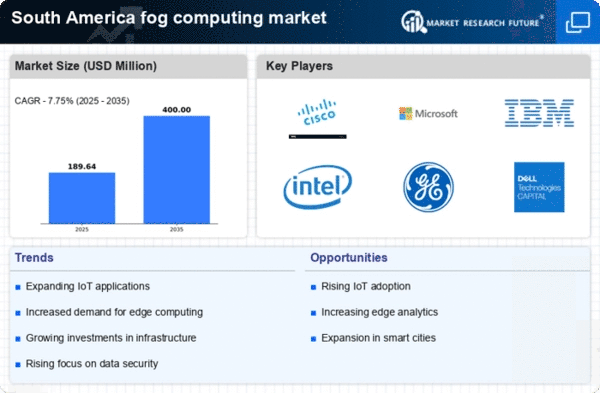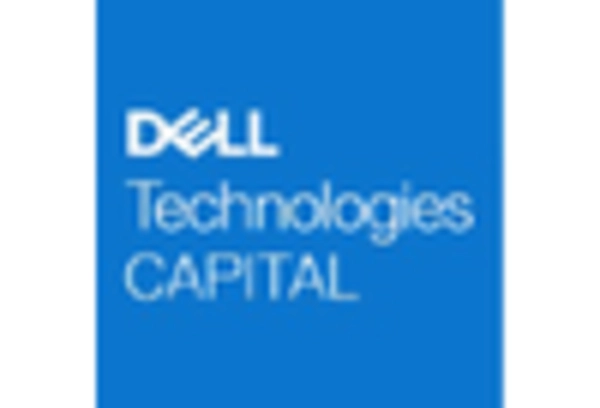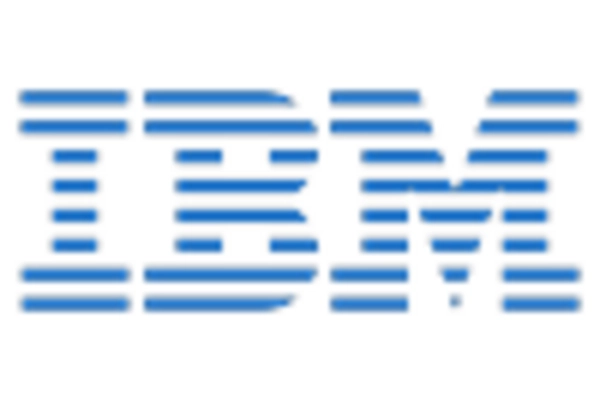Expansion of IoT Ecosystem
The fog computing market in South America is significantly influenced by the rapid expansion of the Internet of Things (IoT) ecosystem. As more devices become interconnected, the volume of data generated increases exponentially, necessitating efficient data processing solutions. Fog computing serves as a bridge between cloud computing and edge devices, enabling localized data processing and reducing the burden on centralized cloud infrastructures. This is particularly relevant in sectors such as agriculture and healthcare, where real-time data analysis is crucial. The market is expected to witness a growth rate of around 30% in the next few years, driven by the proliferation of IoT applications. This expansion not only enhances operational efficiency but also fosters innovation in service delivery, thereby reinforcing the fog computing market's position in the region.
Increased Focus on Data Security
Data security concerns are becoming increasingly prominent in the fog computing market in South America. As organizations adopt more decentralized computing models, the need for robust security measures to protect sensitive information is paramount. Fog computing offers enhanced security features by processing data closer to the source, thereby minimizing exposure to potential cyber threats. This is particularly relevant for industries such as finance and healthcare, where data breaches can have severe consequences. The market is projected to grow by approximately 20% as businesses prioritize security in their digital transformation strategies. By implementing fog computing solutions, organizations can better safeguard their data while maintaining compliance with regulatory requirements, thus driving the overall growth of the fog computing market.
Emergence of Smart Transportation Solutions
witnessing a transformative shift with the emergence of smart transportation solutions. As urban areas grapple with traffic congestion and pollution, there is a growing need for intelligent transportation systems that leverage real-time data for improved traffic management. Fog computing plays a crucial role in this context by enabling localized data processing for applications such as vehicle-to-everything (V2X) communication and smart traffic signals. This trend is expected to contribute to a market growth rate of around 22% in the coming years. By facilitating efficient data exchange and analysis, fog computing enhances the overall functionality of smart transportation systems, thereby addressing urban mobility challenges and promoting sustainable development.
Rising Demand for Real-Time Data Processing
the fog computing market experiences a notable surge in demand for real-time data processing capabilities. As industries increasingly rely on instantaneous data analytics, the need for localized computing resources becomes paramount. This trend is particularly evident in sectors such as manufacturing and logistics, where operational efficiency hinges on timely decision-making. According to recent estimates, the fog computing market is projected to grow at a CAGR of approximately 25% over the next five years. This growth is driven by the necessity for reduced latency and enhanced data management, which are critical for applications like IoT and smart devices. Consequently, businesses are investing in fog computing solutions to optimize their operations and improve service delivery, thereby propelling the overall market forward.
Growing Investment in Telecommunications Infrastructure
Investment in telecommunications infrastructure is a key driver for the fog computing market in South America. As the demand for high-speed internet and connectivity increases, telecommunications companies are expanding their networks to support emerging technologies. This expansion is essential for enabling fog computing solutions, which rely on robust connectivity to function effectively. The market is anticipated to grow by approximately 18% as telecommunications providers invest in upgrading their infrastructure to accommodate the increasing data traffic generated by IoT devices. Enhanced connectivity not only supports fog computing applications but also fosters economic growth by enabling businesses to leverage advanced technologies, thereby solidifying the fog computing market's role in the region.

















Leave a Comment